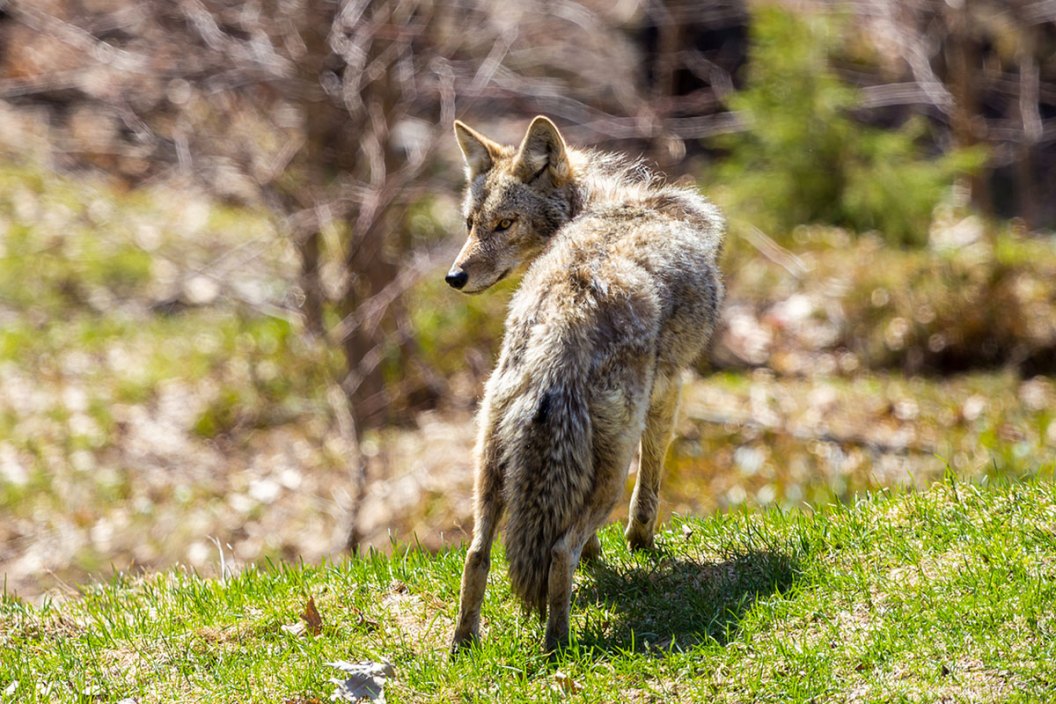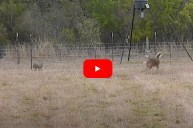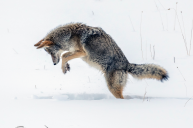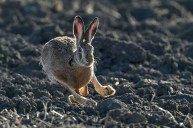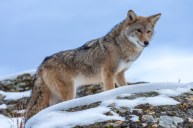Coyotes are savvy predators and elusive prey. These canines possess fine senses of smell, sight, and hearing that have been honed by thousands of years of evolution. They're smart and communicative. They learn quickly. And they're fierce enough as a pack to take down prey from whitetail deer to wild sheep to cow elk.
Because their populations are healthy across most of North America, coyotes also make great game for hunters around the country. Many hunters harvest coyotes to protect small game and whitetail deer populations, but coyotes are also prized for their late-season pelts, and simply as a worthy adversary in a hunt. Nighttime predator hunting and specialized techniques make for hunting that's unique and even addicting.
Indeed, though populations are healthy, coyote hunting is extremely challenging. If you aren't extremely careful about every element of your hunt—from concealment to wind direction, scent control, movement, decoying, firearm preparedness and a great shot—you will struggle to harvest coyotes. That's where expertise, gear, and preparation come into play.
When to Hunt Coyotes
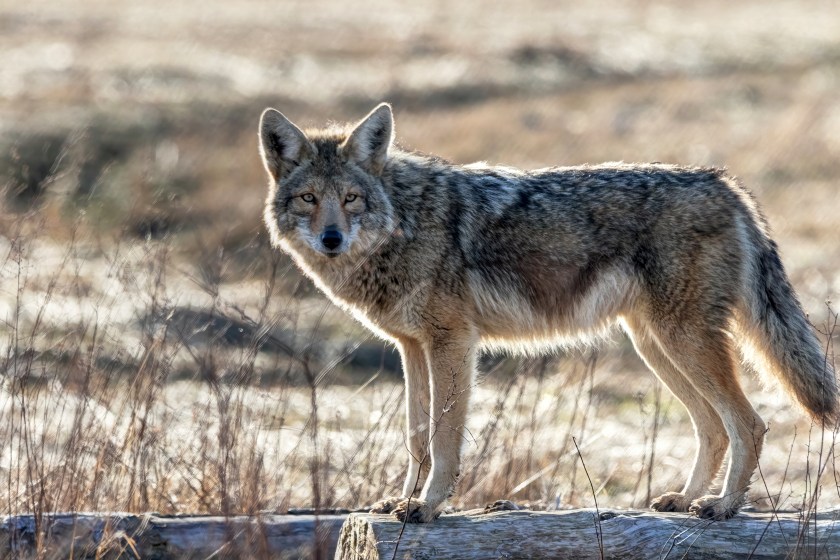
Getty
For a predator hunter, the cold winter months of January and February generally mark the beginning of what is arguably the best time of the year to hunt. As the winter progresses, coyotes begin mating, which means more sightings and more opportunities. Coyotes are usually in search of food and can be less wary in the colder months, making them easier to decoy and call.
Spring is another great season for coyote hunting. When fawns drop, coyotes hunt them aggressively, providing an opportunity for smart hunters.
Coyotes aren't just meat eaters; they're actually omnivores, which means coyotes will eat everything from berries and insects to rabbits and full-grown deer. This is good news for hunters, as the predators abound in all sorts of landscapes and at any time of the year.
Most states allow coyote hunting day or night during the open season, as long as hunters obtain a valid license. Many states have few or no limits on coyote harvesting. (Some states like Texas and Colorado even offer year-round hunting of coyotes.) In the south, winter often offers the best coyote hunting, as conditions are milder (and more comfortable). Still, many coyote hunters will gladly brave tough conditions—the hunting can be that good.
Scouting Coyotes
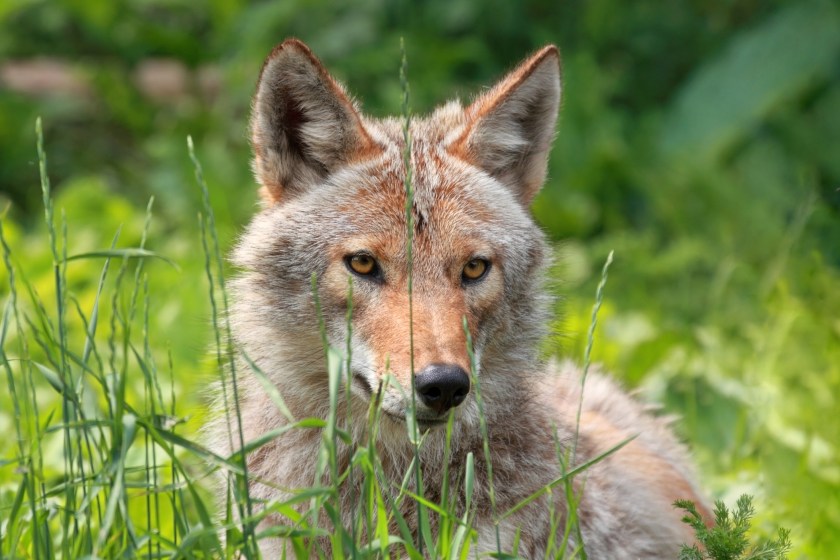
Getty
Many hunters begin coyote scouting while out hunting whitetail deer. Simply sitting in a treestand—or setting up a trail camera—is often enough to spot a passing coyote. Spotting coyote scat or tracks is important for scouting too, but not always easy to do. Often, coyotes are so elusive that we don't see them until they're in the crosshairs of our scope.
Coyotes have their routines like any other animal and aren't always where you might expect them to be. As with other critters that hunt, look for telltale signs such as tracks, scat (droppings), or scavenged carcasses.
Coyotes take the easiest path when they aren't on the chase. Usually, coyotes track on open trails through the woods, old road beds, and, especially, open fields, particularly crop fields.
One great way to scout for coyotes is by calling at night or in the pre-dawn hours. Many hunters visit places they've seen coyotes or their sign, try calling, and see if they get a response from a single coyote seeking others, or a whole pack.
The Best Gear For Hunting Coyotes
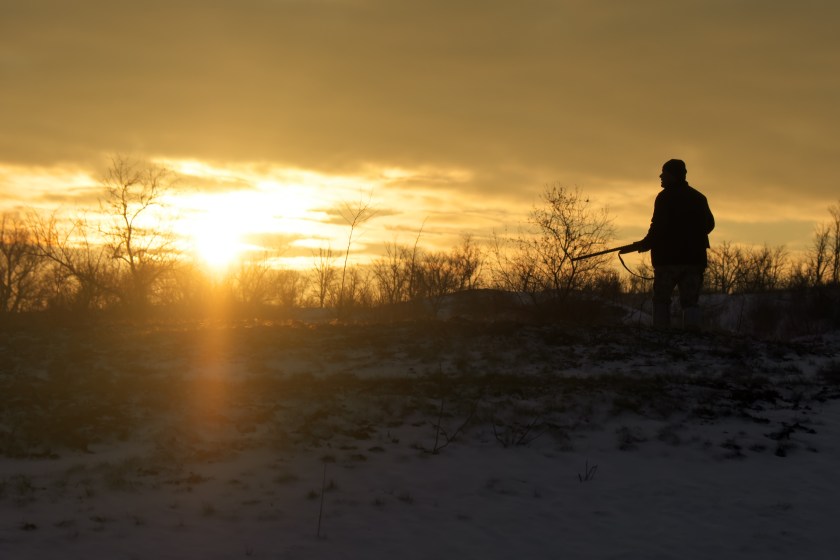
Getty
You don't need loads of new gear for hunting coyotes—but a few specialized items can go a long way to helping you locate, draw in, and harvest one. Of course, every coyote hunter operates differently, leaving a range of options.
Firearms
A range of calibers will work against coyotes. Some of the more popular rifles used to hunt coyotes include:
- .223 Remington
- .243 Winchester
- .22-250 Remington
- 6.5 Creedmoor
If you're hunting for pelts, smaller calibers down to .22 magnums will certainly work; avoiding expanding bullets also helps. On the other hand, those who want to stop a coyote in its tracks-especially from outside of 100 yards—may want to consider packing more of a punch with a higher caliber. Some hunters even swear by a 12-gauge shotgun when hunting for coyotes in the woods.
Coyote Calls
Calls are the bread and butter of coyote hunting. They get a coyote's attention and can often tempt them into shooting range. On the other hand, if used incorrectly, a call can send a coyote heading the other way, fast. Here are the three basic types of calls to use:
- Electronic Call: These battery-operated calls come with preloaded sounds imitating other coyotes and prey such as birds, rodents, and especially rabbits. Nowadays, they are extremely common because they work so well—but overuse and coyotes that have gotten "smart" to canned electronic calls are things to consider when deciding what call to use on a particular hunt.
- Open-Reed Call: Open-reed calls have much more range and volume to get the attention of coyotes that are further away. They are more versatile in the types of sounds that you can make, but are more difficult to master.
- Closed-Reed Call: These are a bit more economical to buy and easier to use; the hunter basically only needs to blow through them to make the call. They can make multiple sounds like an open reed call, but don't have the same range or volume.
Coyote Hunting Decoys
Decoys are a great way to convince curious coyotes to commit to investigating your calls, and there are some great options out there on the market. A decoy also gives a coyote something to distract it from the hunter's location. One important note: decoys imitating coyotes are not recommended for public land hunting, as another hunter could easily mistake one for the real thing.
- Full-Body Coyote Decoy: A three-dimensional decoy that stands on its own "legs" to appear the most lifelike.
- Two-Dimensional Decoys: These are cutouts that have the likeness of the animal printed on its side and stand up with the help of a ground stake. Often, these decoys have a very good quality photographic image.
- Electronic Decoy: These are either a part of an electronic calling system, or a stand-on-their-own decoy that is battery-powered (regular or rechargeable) and remotely controlled. The best part of an electronic decoy is its ability to fool predators by its movement and help to keep their wary eyes away from the hunter's location.
Camouflage
It's important for hunters to conceal themself at the point of attack to keep the sharp eyes of a coyote from spotting them. The hunter should always sit with their back to a tree whenever possible for safety reasons, but should also choose the camouflage pattern that best suits the area or region where they are hunting, as coyotes have keen eyesight.
Camouflage patterns for coyote hunting can range from the usual suspects like brown and green leafy patterned camo, to winter-specific camo, to the rocky terrain patterns of the west. Some hardened coyote hunters love to use the esteemed Ghillie suit for the ultimate in disappearing and concealment.
Binoculars and Spotting Scopes
A good pair of binoculars or a spotting scope can help you spot a coyote before it spots you. The extra sight distance is important to help you get ready and stay quiet and still until the time comes to shoot. Coyotes also often hang out at the far edge of shooting range, so getting eyes on them can help you call them in or take a long shot with accuracy.
Night Vision/Thermal Scope
Many dedicated coyote hunters use night vision and thermal scopes to great effect since coyotes (and other predators like bobcats) are most active after dark.
Thermal rifle scopes use infrared radiation to detect the heat of the animal; a night-vision rifle scope uses an image-intensifying tube to amplify what can be seen in low-light conditions. While a thermal system gives you much better detection, night vision scopes give you much better identification of the animal. So, many dedicated coyote hunters find themselves asking: Why not use both?
Hunting Pack
Hunting packs can be as simple as a small day pack and as large as a backcountry hiking backpack. Having the right pack really makes the difference when it comes to carrying all your aforementioned decoys, binos, electronics, and calls.
Depending on if you're going to have a long hike or a short walk to your hunting spot, you will want to choose the pack option that works best for your needs. It should be lightweight, camouflaged, and have plenty of room for your gear, food, and water.
Shooting Sticks
Shooting sticks can help you to stay steady while waiting for a hung-up coyote to come in. Most coyote hunting is done close to the ground—sometimes even in the prone position—so much so that having a good pair of shooting sticks or a bipod system on your rifle to steady your shot almost goes without saying.
Seat
Since coyote hunting is most often done from the ground, making a comfortable yet highly portable seat a must. A good seat is generally collapsible, can be carried on or in a backpack, and works just about anywhere. Even a simple situpon style cushion goes a long way when you're sitting for hours.
Rangefinder
A rangefinder can be very useful to determine distances long before a shot is taken. For those hunting in tough conditions and keen on taking long shots, it's a prime item.
How to Hunt Coyotes
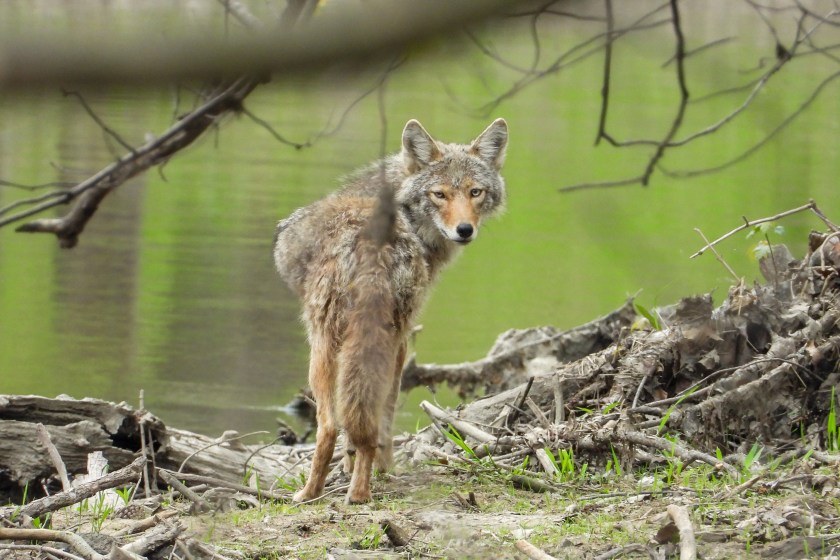
Getty
The Setup
Because coyotes have keen hearing, sight, and smell, a proper setup is essential. Considerations for where and how you'll set up should include the lay of the land, decoy placement, camouflage, your choice of firearm and ammunition, and more.
Using the lay of the land—hills, brush, and fencerows, for instance—you can disappear into the landscape all while finding an opening for a good shot. Here's where your scouting and calling can come into play; you'll want to consider where coyotes will be coming from, since wind direction is important. Extra preparation often translates into success. Consider, for instance, that coyotes will often circle around a call, which could betray your smell or outline.
The Firearm
Trying to pick out the best coyote hunting firearm is like trying to choose the best bass lure; there are a lot of choices for a lot of different circumstances and for the most part, you will be successful with any of them. This is not to say that it doesn't matter what firearm you use. On the contrary, all rifles and ammunition are not the same.
- It really boils down to rifle caliber, even though some coyote hunters still use shotguns successfully.
- Generally speaking, and arguments notwithstanding, the .223 Remington, .243 Winchester, and the 6.5 Creedmoor seem to get the most attention.
- If you plan on taking longer shots then the higher calibers such as the .270 Win Mag and even the .308 Win has plenty of power and range to more than do the job.
- Archery tackle is far less common for coyotes, mainly because of the difficulty and possibility of the moving shot, along with the distance. Crossbows, which have a longer effective range, are becoming more popular.
Decoy Placement, Scent, and Calling
When combining coyote calls and decoys, consider location, visibility, sound amplification, distance from target, and, particularly, wind direction.
- Coyotes generally approach downwind of calls and decoys. This increases the chance that they'll smell you before you ever see them and hightail it. This is another great reason to hunt scent free, just like during deer season.
- Your decoy needs to be visible to approaching coyotes. You need to be invisible. Many hunters place their decoys and electronic callers 30 to 40 yards away, since coyotes have a knack for pinpointing where noise is coming from, increasing the chance you're discovered if you're sitting right atop your calls.
- Some of the best coyote calls can be remote-controlled so the hunter has his or her hands free when the big moment arrives. We like our calls to have a rabbit fur or squirrel tail that is connected to a battery operated system, giving it lifelike movement.
- Hand calls, whether open or closed reed versions, are easier to carry and take up less space in your pack.
- Remember: electronic calls can have a very high volume, so you're going to need to start quietly. Consider how far a small, wounded animal like a rabbit could be heard and adjust it accordingly from there as you try to call coyotes in.
- Because coyotes are so communicative, using a call like a coyote howl or prey in distress can be extremely effective at getting their attention from a distance.
- Obvious prey calls include sounds to mimic all ranges of distressed animals, from rabbits, to rodents, to birds, and even fawns. Other sounds include coyote calls that imitate breeding season vocalizations and especially territorial barks and howls of dominant males that challenge a dog's jurisdiction.
Most of all, remember that it takes a lot of hard work to be successful as a coyote hunter. Set yourself to the task and put your time afield in. Coyotes are smart, but with some practice and a bit of luck, you'll have one in your sights soon.
READ MORE: WHAT DO COYOTES EAT? FACTS AND INFO ABOUT NATURE'S TRICKSTER
